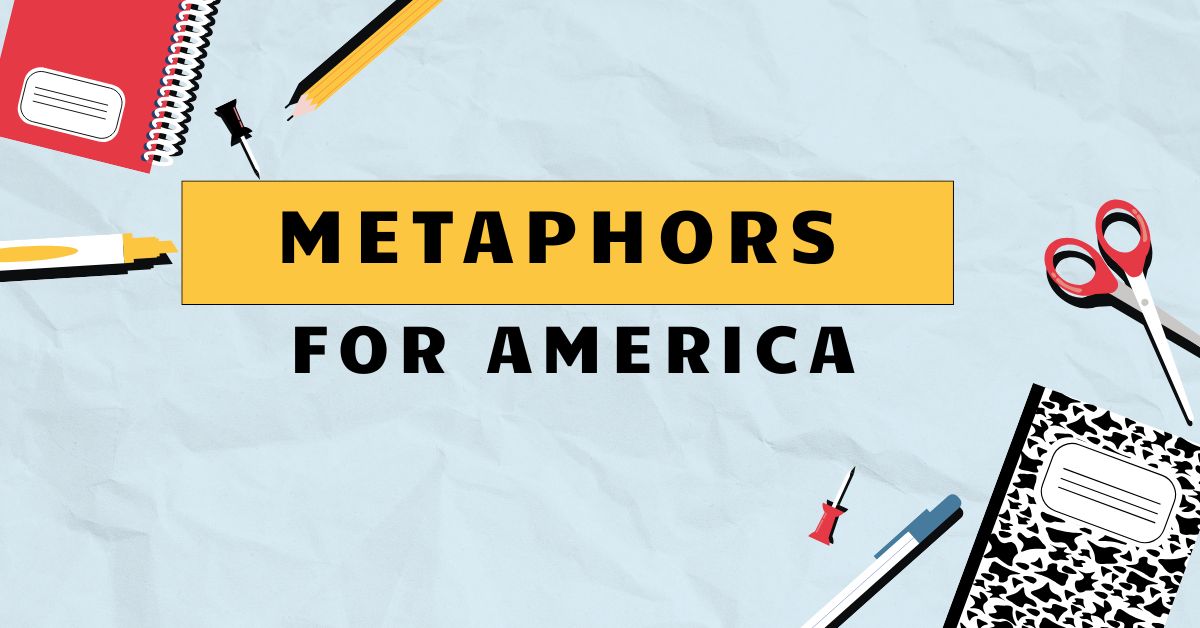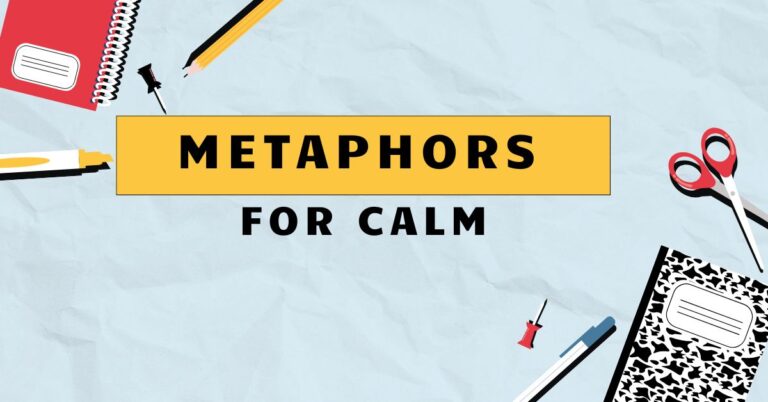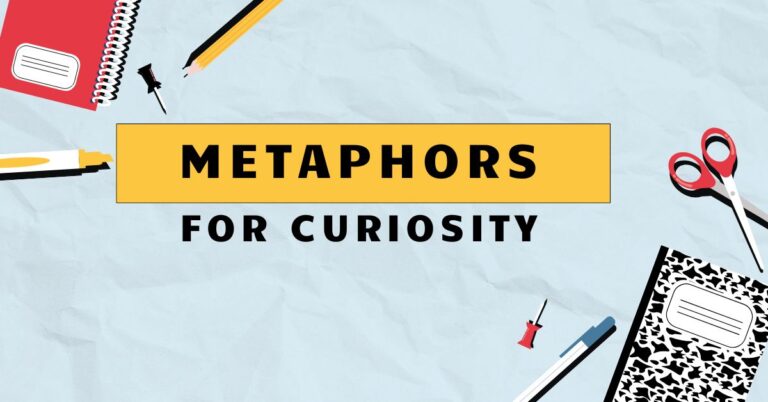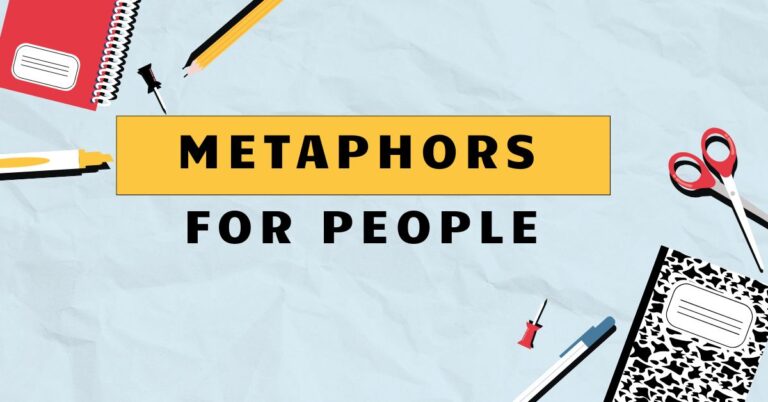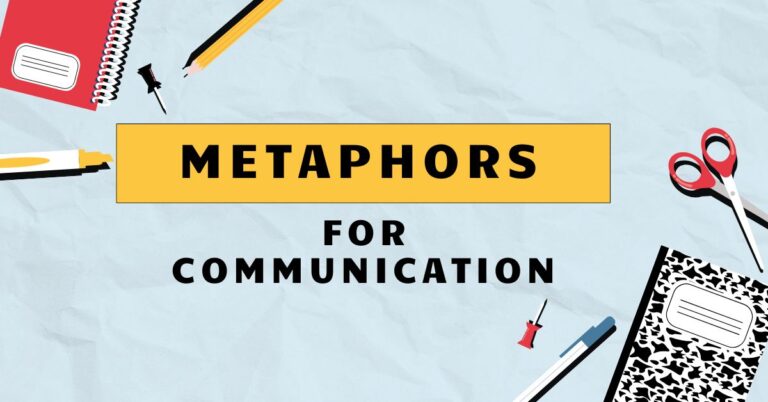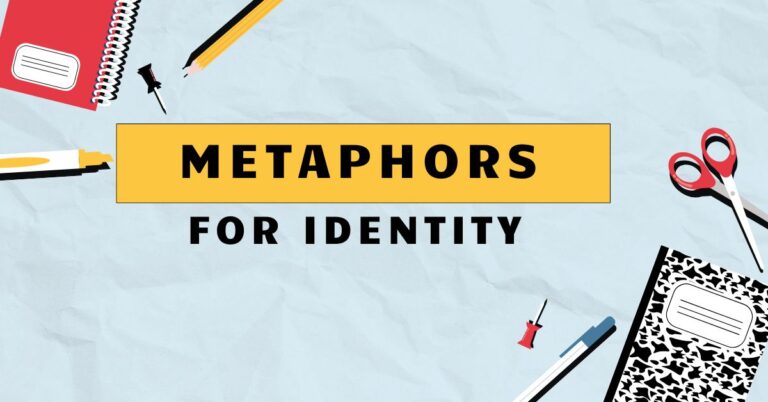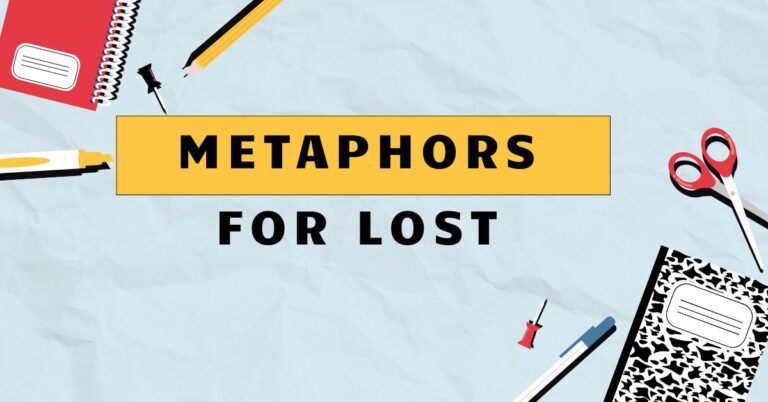33 Metaphors for America: Understanding Figurative Language
Metaphors are powerful tools in language, allowing us to understand complex concepts by relating them to something familiar. When applied to a nation like America, metaphors can reveal deep-seated beliefs, values, and perceptions.
Understanding these metaphors is crucial for grasping the cultural and political narratives that shape American identity. This article explores the various ways America is metaphorically represented, providing insights into the nation’s self-image and how it is perceived by others.
This guide is perfect for English language learners, students of American culture, and anyone interested in the nuances of figurative language.
Table of Contents
- Introduction
- Definition of Metaphor
- Structural Breakdown of Metaphors
- Types of Metaphors
- Examples of Metaphors for America
- Usage Rules for Metaphors
- Common Mistakes with Metaphors
- Practice Exercises
- Advanced Topics in Metaphorical Analysis
- Frequently Asked Questions
- Conclusion
Definition of Metaphor
Ametaphoris a figure of speech that directly compares two unrelated things, asserting that one thingisanother. Unlike similes, which use “like” or “as” to make a comparison, metaphors create a direct equivalence.
Metaphors are essential for conveying abstract ideas, evoking emotions, and adding depth to language. They function by transferring qualities or characteristics from one concept (the source domain) to another (the target domain), thereby illuminating new aspects of the target.
In the context of discussing a nation like America, metaphors serve as powerful tools for shaping public opinion and reinforcing cultural narratives. By associating America with particular images or concepts, speakers and writers can influence how people perceive the country’s identity, role in the world, and future prospects.
Understanding these metaphorical representations is crucial for navigating the complex landscape of American political and social discourse.
Classification of Metaphors
Metaphors can be classified based on their structure and function. Here are a few common classifications:
- Standard Metaphors: These are conventional and widely recognized metaphors.
- Novel Metaphors: These are original and creative metaphors that offer fresh perspectives.
- Dead Metaphors: These are metaphors that have become so common that they are no longer recognized as figurative.
- Extended Metaphors: These are metaphors that are sustained throughout a piece of writing or speech.
Function of Metaphors
Metaphors serve several key functions in language and communication:
- Explanation: They can simplify complex ideas by relating them to familiar concepts.
- Persuasion: They can influence attitudes and beliefs by framing issues in a particular light.
- Expression: They can convey emotions and experiences in a vivid and memorable way.
- Aesthetic Appeal: They can enhance the beauty and creativity of language.
Contexts of Metaphor Use
Metaphors are used in a wide variety of contexts, including:
- Literature: Novels, poems, and plays often use metaphors to create imagery and convey themes.
- Politics: Political speeches and debates frequently employ metaphors to persuade audiences.
- Journalism: News articles and opinion pieces may use metaphors to frame events and issues.
- Everyday Conversation: People use metaphors in everyday speech to express ideas and feelings.
Structural Breakdown of Metaphors
Understanding the structure of a metaphor involves identifying its key components: thetenor(the subject being described) and thevehicle(the object or concept used to describe the subject). The relationship between the tenor and the vehicle creates the metaphorical meaning.
Let’s break down this structural relationship further.
The effectiveness of a metaphor hinges on the perceived similarity or connection between the tenor and the vehicle. This connection allows the qualities of the vehicle to be transferred to the tenor, enriching our understanding of the subject at hand.
In the context of “America as a melting pot,” America is the tenor, and the melting pot is the vehicle. The qualities associated with a melting pot—such as blending, mixing, and integration—are transferred to our understanding of American society.
Tenor and Vehicle
The tenor is the subject to which metaphorical attributes are ascribed. The vehicle is the object whose attributes are borrowed.
Consider the metaphor “America is a beacon of hope.” Here, America is the tenor, and a beacon is the vehicle. The qualities of a beacon—guidance, light, and safety—are attributed to America, suggesting that it provides guidance and hope to others.
Ground
The ground refers to the shared characteristics or similarities between the tenor and the vehicle. It is the basis for the metaphorical comparison.
In the metaphor “America is a melting pot,” the ground is the idea of blending different elements into a unified whole. This shared characteristic allows us to understand how different cultures and ethnicities come together to form American society.
Tension
Tension arises when there are dissimilarities or contradictions between the tenor and the vehicle. This tension can create a deeper level of meaning and invite further interpretation.
For instance, the metaphor “America is a sleeping giant” creates tension between the idea of immense power (giant) and inactivity (sleeping). This tension suggests that America has untapped potential or is not fully engaged in global affairs.
Types of Metaphors
Metaphors come in various forms, each serving a unique purpose. Understanding these different types can help you analyze and interpret metaphors more effectively.
Here are some common types of metaphors:
Standard Metaphors
These are common, widely understood metaphors that have become part of everyday language. They are often used without much conscious thought.
Example: “America is the land of opportunity.” This metaphor is widely recognized and understood to mean that America offers many chances for success.
Novel Metaphors
These are original, creative metaphors that offer a fresh perspective on a subject. They are often used to create a striking image or evoke a strong emotion.
Example: “America is a symphony of cultures, each instrument playing its unique melody.” This metaphor creates a vivid image of cultural diversity and harmony.
Dead Metaphors
These are metaphors that have become so common that they are no longer recognized as figurative. They are often used without any awareness of their metaphorical origin.
Example: “The heart of America.” While “heart” is technically a metaphor, it is so commonly used to refer to the central or essential part of something that it is no longer perceived as figurative.
Extended Metaphors
These are metaphors that are sustained throughout a piece of writing or speech. They are developed over several sentences or paragraphs, allowing for a more complex and nuanced comparison.
Example: “America is a ship, sailing through turbulent waters. The captain, our leader, must steer us carefully to avoid the storms of economic crisis and political division.
The crew, the American people, must work together to keep the ship afloat and on course.” This extended metaphor uses the image of a ship to represent America’s journey through challenges and the importance of leadership and teamwork.
Examples of Metaphors for America
Metaphors for America are diverse and reflect different perspectives on the nation’s identity and role in the world. Here are some examples, categorized by the aspect of America they represent:
America as a Nation
These metaphors describe the overall character and identity of America as a country.
The following table contains varied examples of metaphors used to describe America as a nation. Each example provides a unique perspective on the country’s identity and character, reflecting different values, ideals, and historical experiences.
| Metaphor | Explanation |
|---|---|
| America is a melting pot. | A place where different cultures and ethnicities blend together. |
| America is a beacon of hope. | A symbol of guidance and inspiration for people around the world. |
| America is a land of opportunity. | A place where anyone can achieve success through hard work and determination. |
| America is a young nation. | A country that is still developing and evolving. |
| America is a superpower. | A dominant force in global politics and economics. |
| America is a mosaic of cultures. | Similar to a melting pot, but emphasizing the preservation of individual cultural identities within the larger whole. |
| America is a grand experiment. | Reflects the idea that the nation’s democratic ideals are constantly being tested and refined. |
| America is a city upon a hill. | A model society that serves as an example for others to follow. |
| America is a sleeping giant. | A country with immense potential that has not yet been fully realized. |
| America is a battleground of ideas. | A place where different ideologies and values clash and compete. |
| America is a tapestry of dreams. | A combination of individual aspirations and collective visions. |
| America is a symphony of voices. | A diverse chorus of opinions and perspectives. |
| America is a marketplace of ideas. | A place where different viewpoints can be freely expressed and debated. |
| America is a phoenix rising from the ashes. | A nation that has overcome challenges and emerged stronger. |
| America is a garden of freedom. | A place where liberty and democracy flourish. |
| America is a laboratory of democracy. | A place where different forms of government and social organization are tested. |
| America is a bridge between worlds. | A link connecting different cultures and continents. |
| America is a melting crucible. | A more intense version of the melting pot, suggesting a more transformative process. |
| America is an unfinished symphony. | Suggests that the nation’s story is still being written, with much more to come. |
| America is a land of contrasts. | Highlights the many contradictions and paradoxes that exist within the nation. |
| America is a work in progress. | Similar to an unfinished symphony, emphasizing ongoing development and improvement. |
| America is a kaleidoscope of cultures. | Similar to a mosaic, but suggesting a more dynamic and ever-changing pattern. |
| America is a testing ground for ideals. | Reflects the idea that the nation’s principles are constantly being challenged and reevaluated. |
| America is a land of second chances. | Highlights the opportunity for reinvention and new beginnings. |
America as its People
These metaphors focus on the characteristics and qualities of the American people.
The following table explores metaphors that characterize the American people, focusing on their diverse traits, values, and collective identity. These metaphors offer insights into how Americans perceive themselves and how they are viewed by others.
| Metaphor | Explanation |
|---|---|
| Americans are pioneers. | People who are willing to explore new frontiers and take risks. |
| Americans are rugged individualists. | People who value independence and self-reliance. |
| Americans are innovators. | People who are constantly creating new ideas and technologies. |
| Americans are dreamers. | People who are optimistic and believe in the possibility of a better future. |
| Americans are a melting pot of ethnicities. | A diverse mix of people from different backgrounds and cultures. |
| Americans are builders. | Reflects the nation’s history of construction, innovation, and development. |
| Americans are a patchwork quilt. | Emphasizes the diverse and interconnected nature of the American population. |
| Americans are a chorus of voices. | Highlights the diversity of opinions and perspectives within the nation. |
| Americans are resilient. | People who are able to overcome challenges and adversity. |
| Americans are a tapestry of stories. | A collection of individual narratives that together form the American identity. |
| Americans are explorers. | People who are driven by curiosity and a desire to discover new things. |
| Americans are a family of strangers. | Reflects the sense of community and shared identity despite diverse backgrounds. |
| Americans are a nation of immigrants. | Highlights the role of immigration in shaping the nation’s identity. |
| Americans are a beacon of freedom. | People who value liberty and democracy. |
| Americans are a rainbow of cultures. | Celebrates the diversity and beauty of different cultural backgrounds. |
| Americans are a symphony of talents. | Highlights the diverse skills and abilities of the American people. |
| Americans are a garden of ideas. | A place where creativity and innovation flourish. |
| Americans are a melting pot of generations. | Emphasizes the blending of different age groups and their unique perspectives. |
| Americans are a mosaic of beliefs. | Highlights the diversity of religious and philosophical views. |
| Americans are a river of progress. | Reflects the nation’s constant movement towards advancement and improvement. |
| Americans are a melting pot of languages. | Highlights the linguistic diversity of the American population. |
| Americans are a bridge of understanding. | People who connect different cultures and perspectives. |
| Americans are a canvas of dreams. | A place where individual aspirations are expressed and realized. |
| Americans are a flame of hope. | People who inspire others with their optimism and determination. |
America as a System
These metaphors describe America’s political, economic, or social systems.
The table below categorizes metaphors used to describe America’s systems, including its political, economic, and social structures. These metaphors provide a deeper understanding of how the nation functions and its underlying principles.
| Metaphor | Explanation |
|---|---|
| America is a free market. | An economic system based on competition and individual initiative. |
| America is a democracy in action. | A political system where citizens have the power to influence government. |
| America is a social safety net. | A system of programs designed to protect vulnerable members of society. |
| America is a battleground of ideologies. | A place where different political and social beliefs clash. |
| America is a ladder of opportunity. | A system that allows people to climb the social and economic ranks. |
| America is a political chessboard. | Reflects the strategic and often complex nature of political maneuvering. |
| America is an economic engine. | Highlights the nation’s role as a driver of global economic growth. |
| America is a melting pot of ideas. | A place where different perspectives come together to create new solutions. |
| America is a marketplace of opinions. | A place where different viewpoints can be freely expressed and debated. |
| America is a legal labyrinth. | Reflects the complexity and often confusing nature of the legal system. |
| America is a social contract. | An agreement between citizens and their government. |
| America is a political circus. | Highlights the often theatrical and sensational aspects of politics. |
| America is an innovation hub. | A center for technological and creative advancements. |
| America is a regulatory maze. | Reflects the complex web of rules and regulations that govern society. |
| America is a social experiment. | An ongoing test of different social and political models. |
| America is a political machine. | Highlights the organized and often ruthless nature of political organizations. |
| America is an economic rollercoaster. | Reflects the ups and downs of the economy. |
| America is a social fabric. | Emphasizes the interconnectedness of different social groups. |
| America is a political ecosystem. | Highlights the interactions and dependencies between different political actors. |
| America is an economic garden. | A place where businesses can grow and flourish. |
| America is a social mosaic. | Highlights the diversity of social groups and their unique contributions. |
| America is a political arena. | A place where different political forces compete for power. |
| America is an economic playground. | A place where entrepreneurs can take risks and pursue their dreams. |
| America is a social laboratory. | A place where different social policies are tested and evaluated. |
Usage Rules for Metaphors
Using metaphors effectively requires understanding certain rules and guidelines. While metaphors are inherently creative, adhering to these principles can ensure clarity and impact.
Clarity
Ensure that the metaphor is clear and easily understood. Avoid using obscure or overly complex metaphors that may confuse your audience.
The connection between the tenor and the vehicle should be readily apparent.
Example: Instead of saying “America is a palimpsest of history,” which might be confusing, you could say “America is a book written over and over, each chapter adding to its rich history.”
Relevance
The metaphor should be relevant to the subject matter and the context in which it is used. It should enhance the understanding of the topic, not distract from it.
Example: When discussing America’s economic strength, a metaphor like “America is an economic powerhouse” is more relevant than “America is a blooming flower.”
Consistency
Maintain consistency within an extended metaphor. Avoid mixing metaphors or introducing conflicting images that can undermine the overall effect.
Example: If you start by describing America as a ship, avoid suddenly switching to describing it as a train. Instead, continue developing the ship metaphor, such as “The ship of America must navigate treacherous waters.”
Originality
While standard metaphors can be effective, try to use original metaphors that offer a fresh perspective. This can make your writing or speech more engaging and memorable.
Example: Instead of saying “America is a land of opportunity,” try “America is a launching pad for dreams.”
Appropriateness
Consider the tone and audience when choosing a metaphor. A metaphor that is appropriate in one context may not be suitable in another.
Example: When speaking to a formal audience, avoid using colloquial or slang-based metaphors. Instead, opt for more sophisticated and nuanced comparisons.
Common Mistakes with Metaphors
Even experienced writers and speakers can make mistakes when using metaphors. Here are some common errors to avoid:
Mixed Metaphors
Combining two or more incompatible metaphors creates confusion and weakens the overall effect.
Incorrect: “America is a melting pot sailing towards the stars.” (Mixing the melting pot and ship metaphors)
Correct: “America is a melting pot where different cultures blend together.”
Correct: “America is a ship sailing towards a brighter future.”
Clichés
Overusing tired and predictable metaphors can make your writing or speech sound unoriginal and uninspired.
Cliché: “America is a land of opportunity.”
Better: “America is a place where ambition can take flight.”
Overextended Metaphors
Stretching a metaphor too far can lead to awkward and unnatural comparisons.
Overextended: “America is a garden, and its citizens are the seeds, and the government is the gardener, and the laws are the fertilizer, and the problems are the weeds…”
Better: “America is a garden where diverse cultures can flourish.”
Inappropriate Metaphors
Using metaphors that are insensitive or offensive can damage your credibility and alienate your audience.
Inappropriate: (Using a metaphor that stereotypes or demeans a particular group of people)
Correct: (Using a metaphor that is respectful and inclusive)
Practice Exercises
Test your understanding of metaphors with these practice exercises:
Exercise 1: Identifying Metaphors
Identify the metaphor in each sentence and explain its meaning.
| Question | Answer |
|---|---|
| 1. America is a symphony of cultures. | Metaphor: Symphony. Meaning: America is a harmonious blend of diverse cultures. |
| 2. The American dream is a beacon of hope for many. | Metaphor: Beacon. Meaning: The American dream provides guidance and inspiration. |
| 3. The economy is a rollercoaster ride. | Metaphor: Rollercoaster. Meaning: The economy experiences unpredictable ups and downs. |
| 4. The internet is an information superhighway. | Metaphor: Superhighway. Meaning: The internet allows for the rapid and efficient flow of information. |
| 5. Time is money. | Metaphor: Money. Meaning: Time is a valuable resource that should be used wisely. |
| 6. The politician is a wolf in sheep’s clothing. | Metaphor: Wolf in sheep’s clothing. Meaning: The politician appears harmless but is actually dangerous. |
| 7. The world is a stage. | Metaphor: Stage. Meaning: Life is a performance, and people are actors playing different roles. |
| 8. He is a shining star. | Metaphor: Shining star. Meaning: He is talented and successful. |
| 9. Her words were music to my ears. | Metaphor: Music. Meaning: Her words were pleasing and delightful. |
| 10. Life is a journey. | Metaphor: Journey. Meaning: Life is a process of growth and discovery. |
Exercise 2: Creating Metaphors
Create a metaphor for each of the following concepts:
| Concept | Your Metaphor |
|---|---|
| 1. Education | A key that unlocks potential. |
| 2. Love | A warm fire on a cold night. |
| 3. Fear | A shadow that follows you. |
| 4. Success | A mountain to climb. |
| 5. Failure | A lesson learned. |
| 6. Hope | A light in the darkness. |
| 7. Courage | A shield against fear. |
| 8. Wisdom | A compass that guides you. |
| 9. Happiness | A ray of sunshine. |
| 10. Friendship | A sturdy bridge. |
Exercise 3: Correcting Mixed Metaphors
Identify and correct the mixed metaphors in the following sentences:
| Question | Answer |
|---|---|
| 1. The project is a rollercoaster that needs to stay afloat. | Corrected: The project is a rollercoaster ride. OR The company needs to stay afloat. |
| 2. The idea is a seed that needs to be nipped in the bud. | Corrected: The idea is a seed that needs to be nurtured. OR The problem needs to be nipped in the bud. |
| 3. He is a shining star who is also a diamond in the rough. | Corrected: He is a shining star. OR He is a diamond in the rough. |
| 4. The company is a ship that needs to think outside the box. | Corrected: The company is a ship that needs to stay on course. OR The company needs to think outside the box. |
| 5. The plan is a house of cards that needs to be set in stone. | Corrected: The plan is a house of cards. OR The decision needs to be set in stone. |
| 6. The argument is a slippery slope that is also rock solid. | Corrected: The argument is a slippery slope. OR The argument is rock solid. |
| 7. The opportunity is a golden ticket that needs to be seized with both hands. | Corrected: The opportunity is a golden ticket. OR The opportunity needs to be seized with both hands. |
| 8. The problem is a can of worms that needs to be swept under the rug. | Corrected: The problem is a can of worms. OR The problem needs to be swept under the rug. |
| 9. The solution is a silver bullet that needs to be taken with a grain of salt. | Corrected: The solution is a silver bullet. OR The advice needs to be taken with a grain of salt. |
| 10. The relationship is a rollercoaster that needs to be built on solid ground. | Corrected: The relationship is a rollercoaster. OR The relationship needs to be built on solid ground. |
Advanced Topics in Metaphorical Analysis
For advanced learners, exploring the theoretical underpinnings of metaphors can provide a deeper understanding of their cognitive and cultural significance.
Conceptual Metaphor Theory
Conceptual Metaphor Theory, developed by George Lakoff and Mark Johnson, argues that metaphors are not just linguistic devices but fundamental cognitive structures that shape our understanding of the world. According to this theory, abstract concepts are understood in terms of more concrete concepts through systematic metaphorical mappings.
For example, the concept of “argument” is often understood in terms of “war” (e.g., “He attacked my argument,” “I defended my position”). This suggests that our understanding of arguments is fundamentally shaped by the metaphor ARGUMENT IS WAR.
Cultural Metaphors
Cultural metaphors are metaphors that are deeply embedded in a particular culture and reflect its values, beliefs, and experiences. Understanding cultural metaphors is essential for interpreting cultural texts and behaviors.
For instance, the metaphor “America is a melting pot” is a cultural metaphor that reflects the American ideal of cultural integration. However, it has also been criticized for downplaying the experiences of marginalized groups and the persistence of cultural inequalities.
Critical Metaphor Analysis
Critical Metaphor Analysis involves examining the ideological implications of metaphors and how they can be used to shape public opinion and reinforce power structures. This approach encourages a critical examination of the metaphors we use and their potential consequences.
For example, analyzing the metaphor “America is a global policeman” can reveal how it is used to justify American intervention in foreign affairs and maintain its global dominance. It also invites us to question whether this metaphor accurately reflects the complexities of international relations.
Frequently Asked Questions
Here are some frequently asked questions about metaphors:
- What is the difference between a metaphor and a simile?
- Can a metaphor be a symbol?
- How can I improve my use of metaphors?
- What are some common metaphors for describing abstract concepts?
- How do metaphors influence our thinking?
- What is an extended metaphor?
- How can I avoid using clichés in my writing?
- What role do metaphors play in political discourse?
- Are metaphors universal, or do they vary across cultures?
- How can I analyze the metaphors used in a text or speech?
A metaphor directly equates two things (e.g., “America is a melting pot”), while a simile compares two things using “like” or “as” (e.g., “America is like a melting pot”).
Yes, a metaphor can function as a symbol if it represents something beyond its literal meaning. For example, the metaphor “America is a beacon of hope” can symbolize the nation’s role as a leader and inspiration.
Read widely, pay attention to how metaphors are used in different contexts, and practice creating your own metaphors. Also, be mindful of clarity, relevance, and originality.
Common metaphors include: “time is money,” “love is a journey,” and “life is a game.”
Metaphors shape our understanding of abstract concepts by relating them to more concrete and familiar experiences. They can also influence our attitudes and beliefs by framing issues in a particular light.
An extended metaphor is a metaphor that is developed over several sentences or paragraphs, allowing for a more complex and nuanced comparison.
Be mindful of overused phrases and try to come up with original and creative metaphors that offer a fresh perspective.
Metaphors are used in political discourse to persuade audiences, frame issues, and shape public opinion. They can be powerful tools for influencing attitudes and beliefs.
While some metaphors may be universal, many metaphors are culturally specific and reflect the values, beliefs, and experiences of a particular culture.
Identify the tenor and vehicle of each metaphor, consider the ground (shared characteristics), and analyze the ideological implications of the comparison.
Conclusion
Metaphors are powerful tools for understanding and communicating complex ideas, especially when discussing a multifaceted nation like America. By recognizing and analyzing the metaphors used to describe America, we gain insights into the values, beliefs, and perceptions that shape its identity.
From “America as a melting pot” to “America as a beacon of hope,” these figurative representations reveal the diverse ways in which the nation is perceived and understood.
Mastering the art of using metaphors involves understanding their structure, types, and usage rules. By avoiding common mistakes like mixed metaphors and clichés, you can enhance the clarity and impact of your writing and speech.
As you continue to explore the world of metaphors, remember to be mindful of their cultural
, historical, and ideological implications, and strive to use them in a way that is both creative and responsible. Whether you are an English language learner, a student of American culture, or simply someone interested in the power of language, understanding metaphors will enrich your ability to interpret and engage with the world around you.

